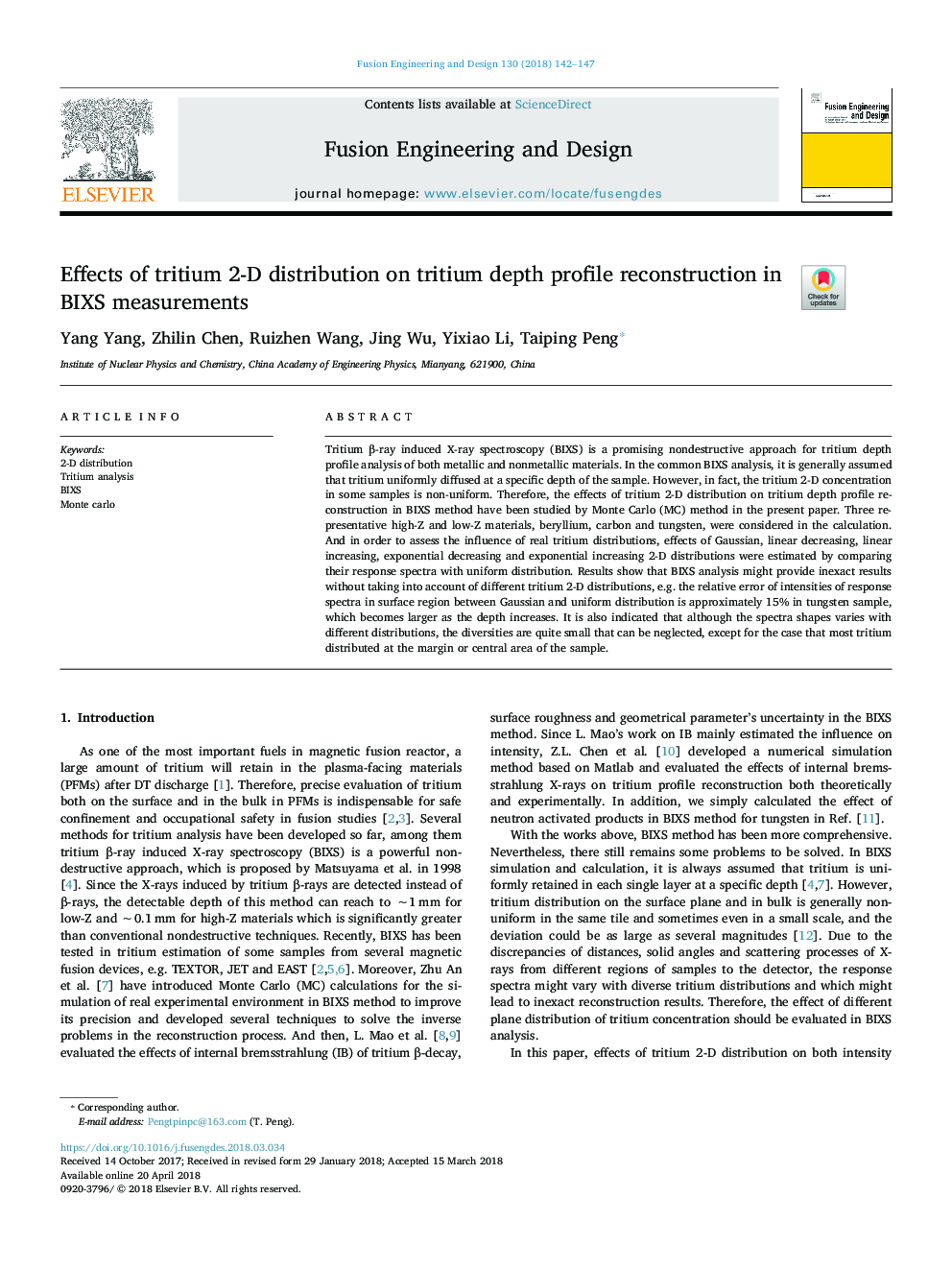| Article ID | Journal | Published Year | Pages | File Type |
|---|---|---|---|---|
| 6743058 | Fusion Engineering and Design | 2018 | 6 Pages |
Abstract
Tritium β-ray induced X-ray spectroscopy (BIXS) is a promising nondestructive approach for tritium depth profile analysis of both metallic and nonmetallic materials. In the common BIXS analysis, it is generally assumed that tritium uniformly diffused at a specific depth of the sample. However, in fact, the tritium 2-D concentration in some samples is non-uniform. Therefore, the effects of tritium 2-D distribution on tritium depth profile reconstruction in BIXS method have been studied by Monte Carlo (MC) method in the present paper. Three representative high-Z and low-Z materials, beryllium, carbon and tungsten, were considered in the calculation. And in order to assess the influence of real tritium distributions, effects of Gaussian, linear decreasing, linear increasing, exponential decreasing and exponential increasing 2-D distributions were estimated by comparing their response spectra with uniform distribution. Results show that BIXS analysis might provide inexact results without taking into account of different tritium 2-D distributions, e.g. the relative error of intensities of response spectra in surface region between Gaussian and uniform distribution is approximately 15% in tungsten sample, which becomes larger as the depth increases. It is also indicated that although the spectra shapes varies with different distributions, the diversities are quite small that can be neglected, except for the case that most tritium distributed at the margin or central area of the sample.
Keywords
Related Topics
Physical Sciences and Engineering
Energy
Energy Engineering and Power Technology
Authors
Yang Yang, Zhilin Chen, Ruizhen Wang, Jing Wu, Yixiao Li, Taiping Peng,
